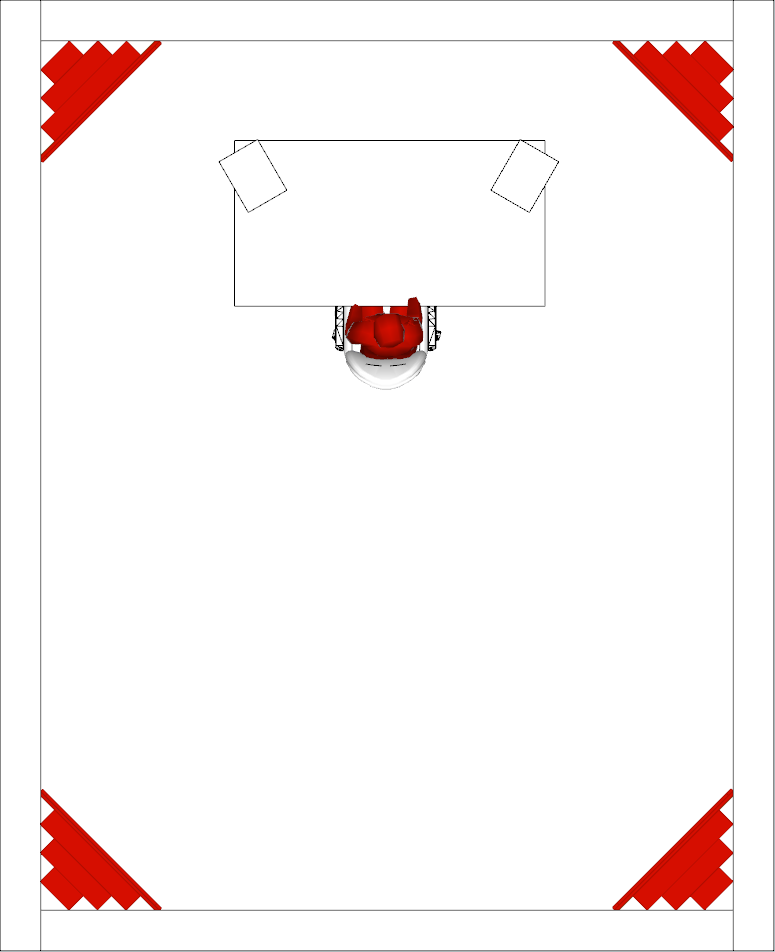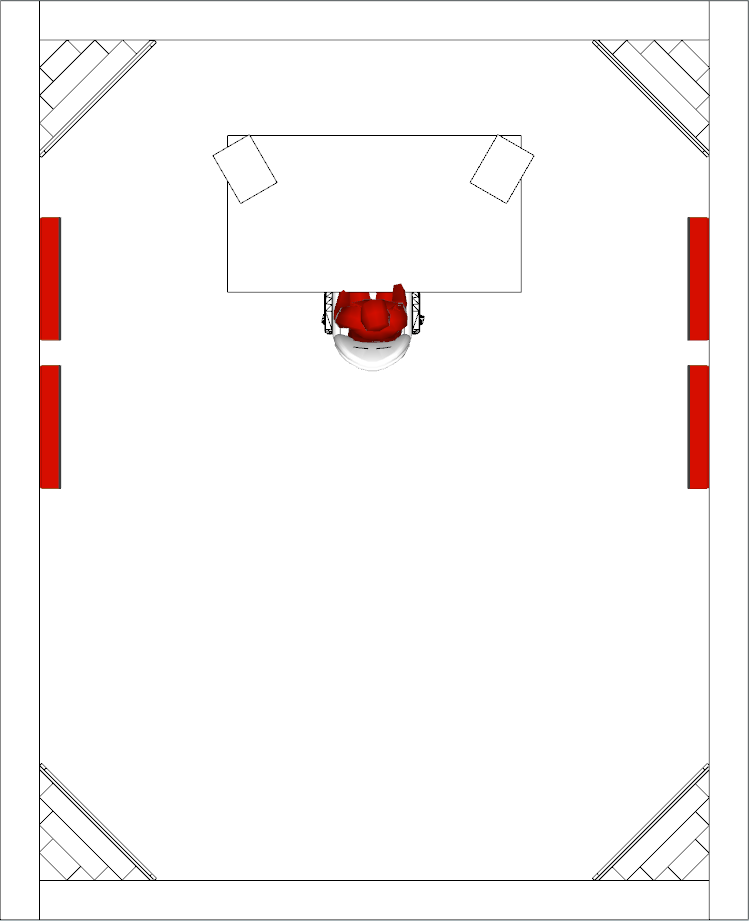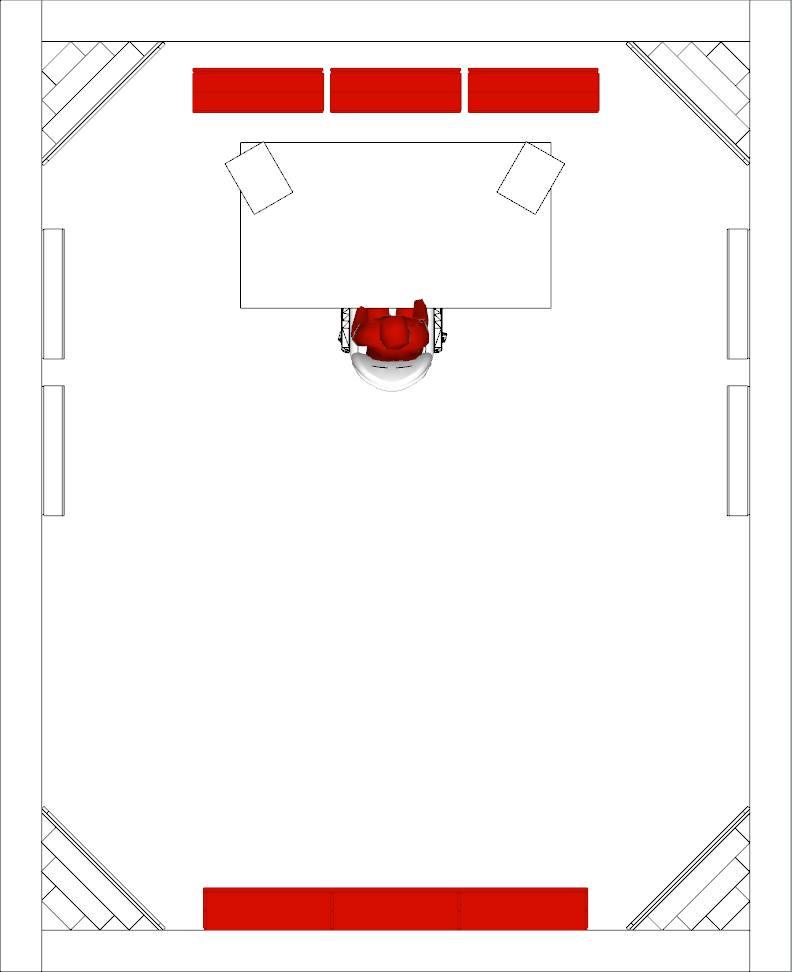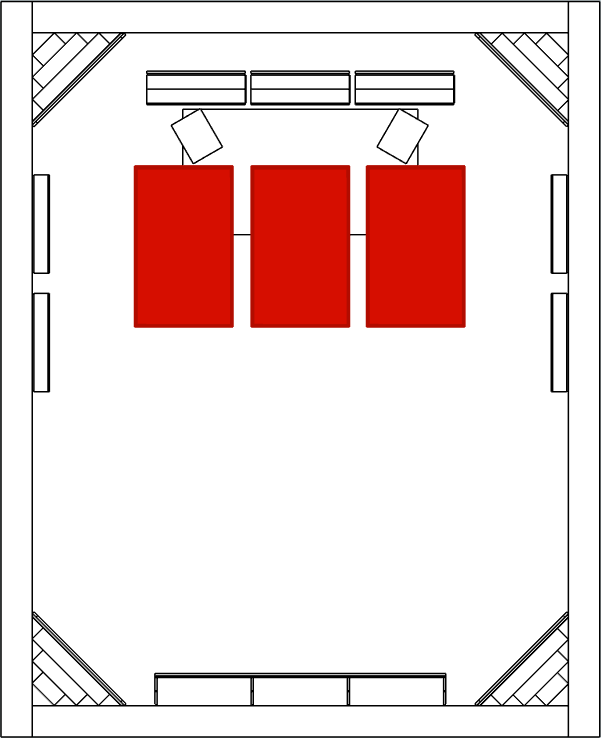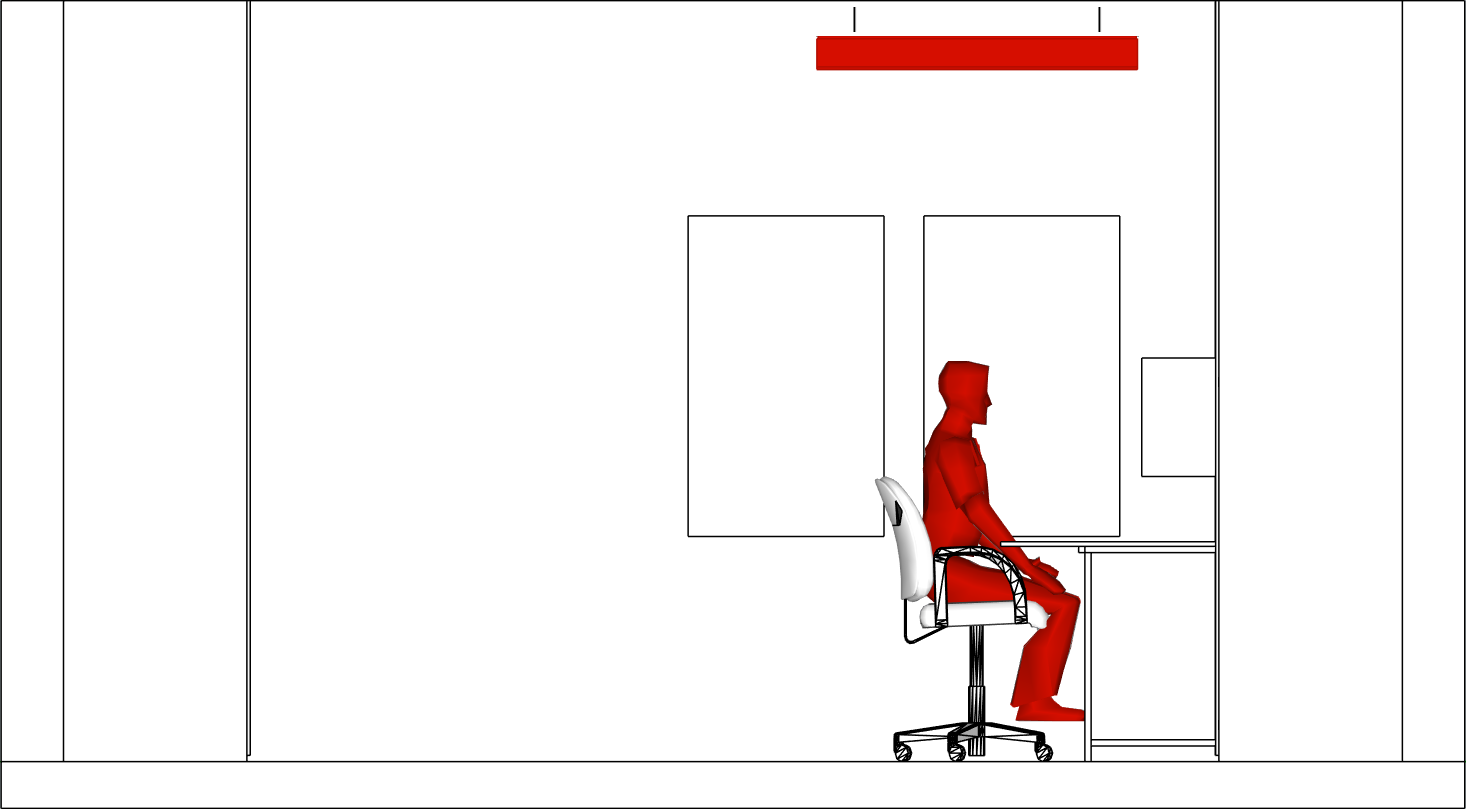Acoustic Room Treatment
There are different opinions on this part, whether it is necessary or not. According to my humble opinion if you believe it seriously, then it is very important step. The Treatment of how you design your room can significantly improve your production flow and save a lot of wasted time by revealing all the pitfalls of sound design.
In order to achieve exactly what you intend to create and also to avoid ugly mistakes in sound design and during song production, you need to hear exactly what is going on in your DAW. To achieve this is necessary ensure right path for the sound from the DAW to your ears. The path begins on monitors and than is sound propagated to the environment where you sitting. This environment includes different obstacles and object as furniture or even pictures on the wall. Environment has also several attributes that influence sound on particular frequencies depends on dimensions and ratio of this dimensions. All this things are responsible for sound distortion on its path to your ears and when you hear too much distorted sound then is very difficult to achieve a sufficient result.
Two things are on the line that can helps. First is room layout and monitors placement and the second is to make some sound treatment elements to tame the sound for this purpose. Behind this topic is wide theoretical background about sound propagation and related physical effects caused by sound reflections (standing waves or flutter echo and comb filtering) but in this article I would like to give you just the basics without boring theory.
For now you just need to know, the lower the frequency of the sound is the more robust (bigger, thicker) material has to be used. Therefore most problematic is to solve low frequencies. To properly threat a room for the bottom low frequencies is need to have a quite big space and a lot of material. In the case of bedroom or home studio we dont have neither of them. From this reason you will never achieve perfect result equal to professionally treated recording studio under home studio conditions but you can end up with acceptable and very helpful results.
There is several things and the room parts where we can implement some improvements:
Corner Bass Traps
Corners are the best place where to tame the lows. Most energy of low frequency sound waves is cumulated in the corners so they are ideal adept to start with. Ideal solution is to fulfill corners as much as possible by some kind of acoustic absorptive material - bigger is better. As usual our possibilities are limited by cost. In order to achieve best price perform ratio is enough to put to the corners some acoustic panels. I design and made my own DIY corner bass traps which are compromise between effectivity and spent material.
Side Walls acoustic panels
Side walls are very important regard to issues related to first reflection zone. Beside of proper placement of your speakers and the point where you should sitting at (sweet-spot), is great to use several acoustic panels on the side walls. Because under our conditions we are limited by space, there is no way to put on the side wall something too thick. Because of that, impacted frequencies will be somewhere in middle and/or high range. For the purpose I have designed cheap DIY acoustic panels. If you have more space along the side walls than you can mount the panels on the wall with gap behind the panel what helps to solve also frequencies with lower values.
Front and Back wall acoustic panels
These parts we can use to achieve further improvement across the entire frequency range. Elements that prevent to undesired reflections on middle and high frequencies and also to trap some lows (higher lows somewhere around 200 - 300Hz). Usually on the back and the front walls is a bit more space in compare with side walls. Maybe it is also your case. I had this space so I could create more robust construction on the back wall. Because surface is bigger it needs also more material. In order to save money I made one big acoustic panel fixed to the back wall. Because it is fixed to the wall, there is no need use material on the back construction, solution saved some money.
On the front side wall of the room I have a window so there was need to use something without attachment to the wall. I designed simple stand alone acoustic panels for this purpose. Panels are thicker than others (18cm depth) used on other positions and its position is a little further away from the wall so they are able to catch also sounds with lower frequencies.
Cloud acoustic panels
For the cloud acoustic panels applies exactly the same as for the Front and the Back. I would say even more. Doesn't matter if your studio is builded up in empty room or it's a space of your bedroom, ceiling is usually without any obstacles. Beside of that, ceiling traps significantly helps for better results across the entire frequency range. They are placed in first reflection zone and since they are hanged from the ceiling there is a gap between them and ceiling. It helps to tame also lower frequencies depends on how far from the ceiling panel is.
My DIY acoustic panels are the same construction as on the side walls but hanged from the top with 5cm gap between them and ceiling. It helps to catch also frequencies for lower range - distance of the acoustic panel from the wall determine value of the frequency which is most affected. Bigger distance between panel and the wall (bigger gap) affects lower frequencies but on the other hand loosing efficiency on the others.
